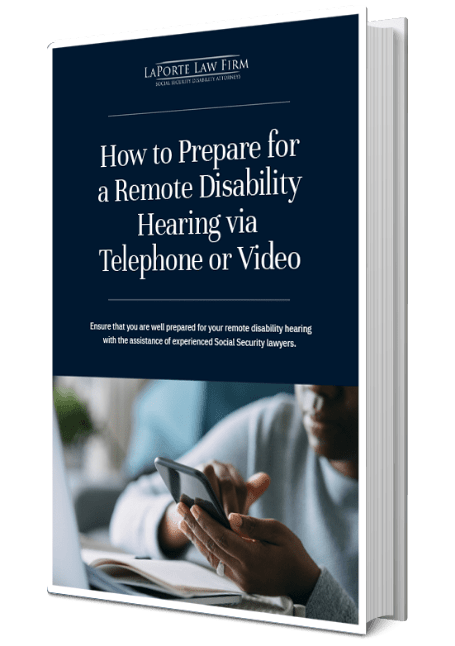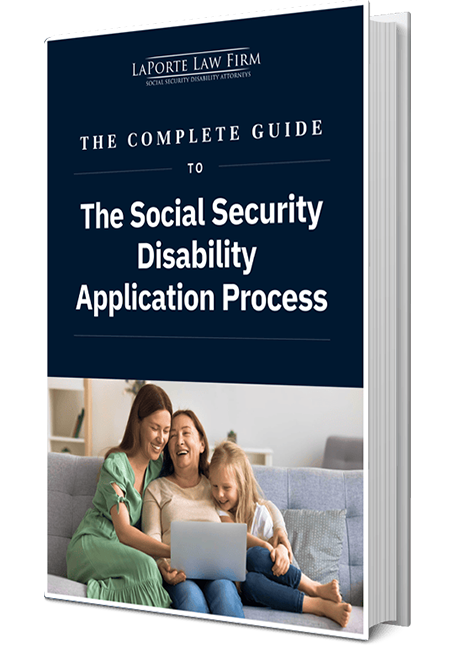
Understanding the intersection of long-term disability (LTD) benefits and Social Security retirement benefits can often feel like navigating a complex maze filled with uncertainties and financial implications. As individuals approach the inevitable crossroads between the latter stages of working life and the onset of retirement, understanding how these benefits can interact is crucial for future planning. This topic is particularly relevant as more people seek clarity on their eligibility and the potential implications of receiving LTD and retirement benefits simultaneously. Differences in benefit periods, eligibility criteria, and potential offsets further complicate this intersection.
Long-term disability benefits are designed to provide financial support to individuals who are unable to work due to a debilitating condition and work for an employer that offers an employer-sponsored LTD benefit, while Social Security retirement benefits serve as a monthly benefit for workers who pay enough federal income taxes to have “insured” their SSA (Social Security Administration) earnings record.
This article explores whether it is possible to receive both long-term disability and Social Security retirement benefits concurrently. We will delve into the integral components of each system, examine the criteria for eligibility, and discuss the financial and legal aspects involved.
Understanding Long-Term Disability (LTD) Benefits
Understanding LTD benefits and how they intersect with other forms of disability income, such as like Social Security Disability Insurance (SSDI) and Social Security retirement, is key for anyone considering or relying on these benefits.
What are LTD benefits?
LTD benefits insurance is a valuable safety net for those unable to work due to a qualifying illness or injury, and who work for an employer who provides this benefit to their employees. It replaces a portion of your income if you can no longer perform your job. The specific percentage of income replaced varies by each specific insurance policy, but it’s typically between 50% and 80%.
LTD insurance is designed to help people maintain their financial stability while they’re unable to work. Many individuals receive LTD insurance through employer-sponsored plans, but it can also be purchased from private insurance companies directly by an individual. These policies often have a benefit period that extends up to the policyholder’s retirement age, depending on the plan terms.
How does LTD insurance work?
Initially, LTD benefits cover the inability to perform tasks related to one’s specific job, known as the “own occupation” period. If a person cannot work in any job suited to their skills and experience afterward, they might continue to receive benefits under an “any occupation” disability standard. The amount provided is a percentage of prior earnings, ensuring some income stability during challenging times.
Policies often include an offset clause, reducing benefits by amounts received from other sources such as SSDI. This prevents the total disability income from surpassing a set limit. Should there be retroactive SSDI payments, the insurer might need repayment for overlapping benefits. LTD policies, offered by employers or private insurers, have unique definitions and coverage rules for different disability types.
Duration and benefit period of LTD
If an individual is found eligible under the “own occupation” or “any occupation” standard, LTD insurance acts as partial income protection. When a person cannot work due to a covered disability, LTD provides a set percentage of the pre-disability income. This begins after a waiting period, which can last several months. Payments are made monthly and can continue until the disability ends, the insured reaches retirement age, or the predetermined period expires. Some policies pay a disability benefit until the worker reaches age 65, while other policies only pay for a limited number of years. You should check your policy for the specifics regarding the duration of the benefit.
Your policy may include a provision regarding the waiting period, in which you are eligible under the disability standard but not entitled to the LTD payment. H2 – SSDI Offset
Most policies require the LTD beneficiary to apply for SSDI payments and will offset the plan’s payments by the amount of the monthly SSDI payment. When your SSDI is approved, the plan might require that you pay the insurance company any back pay or retroactive benefits received. Following SSDI approval, the LTD insurance company will offset the monthly LTD payment by the specific SSDI amount you receive each month. For example, if your LTD payment is $7,000 per month, and your approved SSDI amount is $2,000 per month, the LTD carrier will only pay $5,000 per month following the SSDI approval.
Typically, a SSDI approval following a LTD approval does not result in an increase in net monthly benefits received per month. However, Social Security disability is a notoriously difficult standard to prove disability under, and the “any occupation” standard and the “unable to perform any substantial gainful activity in the national economy” Social Security disability standard are similar. This is why many LTD beneficiaries enjoy the positive impact of an SSDI approval on their LTD claim, when it comes time to prove disability under the “any occupation” standard. If you have questions about your LTD policy or the “own occupation” versus “any occupation” standard, you should consult with an LTD law specialist.
Understanding Social Security Retirement Benefits
Social Security retirement benefits are funded through federal income (FICA) taxes, paid through your employer’s payroll taxes or via self-employment taxes. For Social Security retirement, a retiree can claim their benefit as soon as age 62. Each individual has unique early retirement monthly amounts based on their earnings record.
To find out your specific amounts if you file for early Social Security retirement at age 62 or at full retirement age at 67 (for those born after 1960), create a My SSA Account.
Delaying claiming Social Security retirement benefits past full retirement age to age 70 can increase your payment amount. Dependents can also receive benefits based on the retiree’s Social Security record.
Transition from LTD to retirement benefits
Long-term disability benefits often cease before you reach full retirement age.. Many LTD policies require filing for SSDI, which can cause an offset in LTD payments, continuing even after you switch to Social Security benefits at retirement. However, note that you are not eligible for SSDI benefits when you reach your full retirement age (age 67 if you were born after 1960).. Knowing these transition periods helps you manage finances smoothly as you shift from long-term disability to retirement. You should carefully review your LTD policy for the benefits periods, and review your My SSA Account to determine your monthly early retirement amount, your full retirement amount, and the year you reach full retirement age.
Receiving LTD and Retirement Benefits Simultaneously
While some people can receive LTD and retirement benefits at the same time, many policies limit this. Often, LTD benefits stop when you reach Social Security retirement age and begin receiving full retirement benefits. Policies may reduce your LTD benefits by any Social Security benefits you receive, including SSDI and retirement benefits. Each private LTD insurance policy may differ in how it handles these offsets, so it is important to check the details of your plan. As a rule, when you start receiving Social Security retirement benefits, expect your LTD payments to adjust.
Common offsets and deductions
LTD policies often include offsets, which are reductions in benefits based on other income you receive. These offsets ensure your total income doesn’t increase. Common offsets include deductions for Social Security benefits and state disability short-term benefitsIt’s important to understand the offset rules in your LTD policy, as they vary with each insurance company Review your policy’s specific language to see how these apply to you. Sometimes, even pension income can lead to offsets. Knowing these offsets helps manage your expectations about your monthly income when receiving both LTD and retirement benefits, and to avoid any unwanted surprises during this challenging period in your life.
Eligibility Criteria
The eligibility criteria for LTD, SSDI, and retirement benefits often require a detailed understanding of different insurance policies and government programs. It’s crucial to familiarize yourself with these requirements and gather detailed medical documentation to support your claims. Each program has unique eligibility standards that must be carefully considered to successfully receive and maximize your disability income.
Requirements for LTD benefits
As mentioned, long-term disability typically involves applying through your employer-sponsored insurance plans. These plans provide financial support when a disability prevents you from working for an extended period. Most of these plans have specific definitions of disabilities and waiting periods before the benefits begin. These include the “own occupation” standard for the initial prescribed period of time under the policy, and the “any all occupation” standard that applies at the end of the “own occupation” period.
LTD insurance calculates your monthly benefit based on a percentage of your pre-disability earnings, subject to policy-specific terms. It’s also important to be aware of the waiting periods associated with LTD policies. These periods dictate when you can start receiving benefits after your disability occurs. If you cannot perform your job during the “own occupation” period, and any suitable job during the “any occupation” period, you may qualify for LTD benefits.
For SSDI, you must prove that you are unable to work for at least 12 months after you stop working due to a disability. See the other criteria you must meet when applying for SSDI here.
Tax Implications for LTD and Retirement Benefits
Tax considerations are an important aspect of managing LTD and retirement benefits. SSDI is subject to federal income tax if your household income exceeds certain thresholds. Whether your LTD benefits are taxable depends on how your insurance premiums were paid. If your employer covered the premiums with pre-tax dollars, LTD benefits are taxable. However, if you paid with after-tax dollars, these benefits might be tax-free.
Impact of Reaching Retirement Age on LTD Benefits
SSDI automatically converts to Social Security retirement benefits at full retirement age. This change can impact your LTD benefits, depending on your policy terms. Many LTD policies stop payments once you reach retirement age, but some provide limited benefits for a reduced period following this milestone. Employer-sponsored insurance plans often adjust LTD benefits to account for Social Security income, especially as it switches from SSDI to retirement benefits. It’s crucial to review your LTD policy to understand these transitions.
Private Disability Insurance
Private disability insurance helps protect your income if you can’t work due to illness or injury. Unlike employer-sponsored plans, these policies are purchased by individuals. They give you the freedom to choose coverage that fits your needs and budget. While private disability insurance can cover a larger portion of your income, the monthly premium could vary. This means you should carefully consider your financial situation when choosing a plan.
Unlike employer plans, private insurance is not linked to your job. This independence allows you to maintain coverage even if you change jobs. Depending on the policy, some private LTD policies are not impacted by the receipt of SSDI. As always, it is critical to check the fine print of your plan.
Legal and Professional Guidance
Understanding the interplay between long-term disability insurance and Social Security retirement benefits is crucial. Policies differ widely, and what applies in one case might not fit another. The shift from employment income to retirement benefits might alter your overall income. Seeking advice from a knowledgeable lawyer can ease the transition and ensure you make the most of the benefits you’re entitled to.
Importance of consulting a disability benefits lawyer
A disability benefits lawyer simplifies the complex process of understanding how LTD benefits and retirement benefits interact. They can help clarify policy-specific offset rules, ensuring different income sources don’t negatively affect your LTD payments. These skilled attorneys often start by offering a free claim review, helping you secure the benefits you deserve. Some LTD insurance policies also pay the Social Security lawyer fee, rather than putting that cost onto you. They may have different fee structures than Social Security disability attorneys but typically work on a contingency basis, meaning they get paid only if you do.
Finding professional help is pivotal when managing LTD benefits and retirement transitions. Seeking expert advice ensures you navigate the complexities of these laws and rules confidently. For help understanding disability benefits, especially if you’re nearing retirement age, turn to the professionals at LaPorte Law Firm. Contact us today, and one of our lawyers will be glad to provide the guidance you nee
FAQs
Yes, it is possible to receive both LTD benefits and retirement benefits concurrently. However, you should check your specific policy to find out the exact impact of claiming retirement.
LTD benefits can serve as an income replacement while you’re unable to work, but they often don’t fully replace your pre-disability income. This can delay your ability to save for retirement, especially if LTD benefits are lower than your working income. However, having LTD benefits might reduce the need for early withdrawals from retirement savings, allowing you to preserve those funds longer.
Once you reach retirement age, long-term disability benefits typically end and are replaced by Social Security retirement benefits. Your LTD insurer will often stop paying benefits at the same time, since you are no longer considered disabled under their policy, and the Social Security retirement benefits become the primary source of income.
Qualifying for long-term disability may temporarily reduce your ability to save for retirement, especially if LTD benefits are lower than your usual income. However, depending on the terms of the LTD policy, it may also provide financial stability during the years in which you are unable to work, allowing you to avoid dipping into retirement savings, and the tax penalties associated with such withdrawals.














